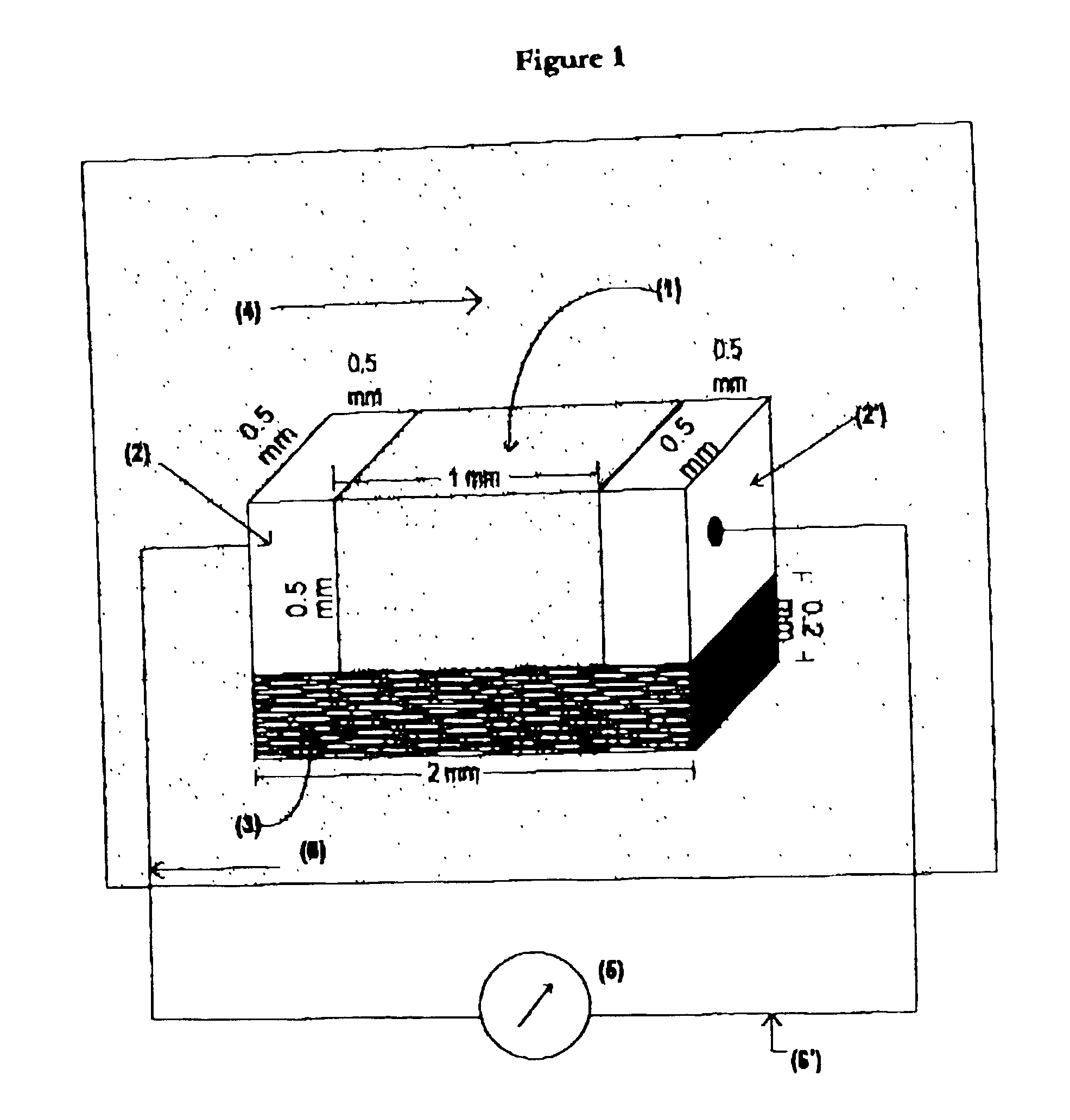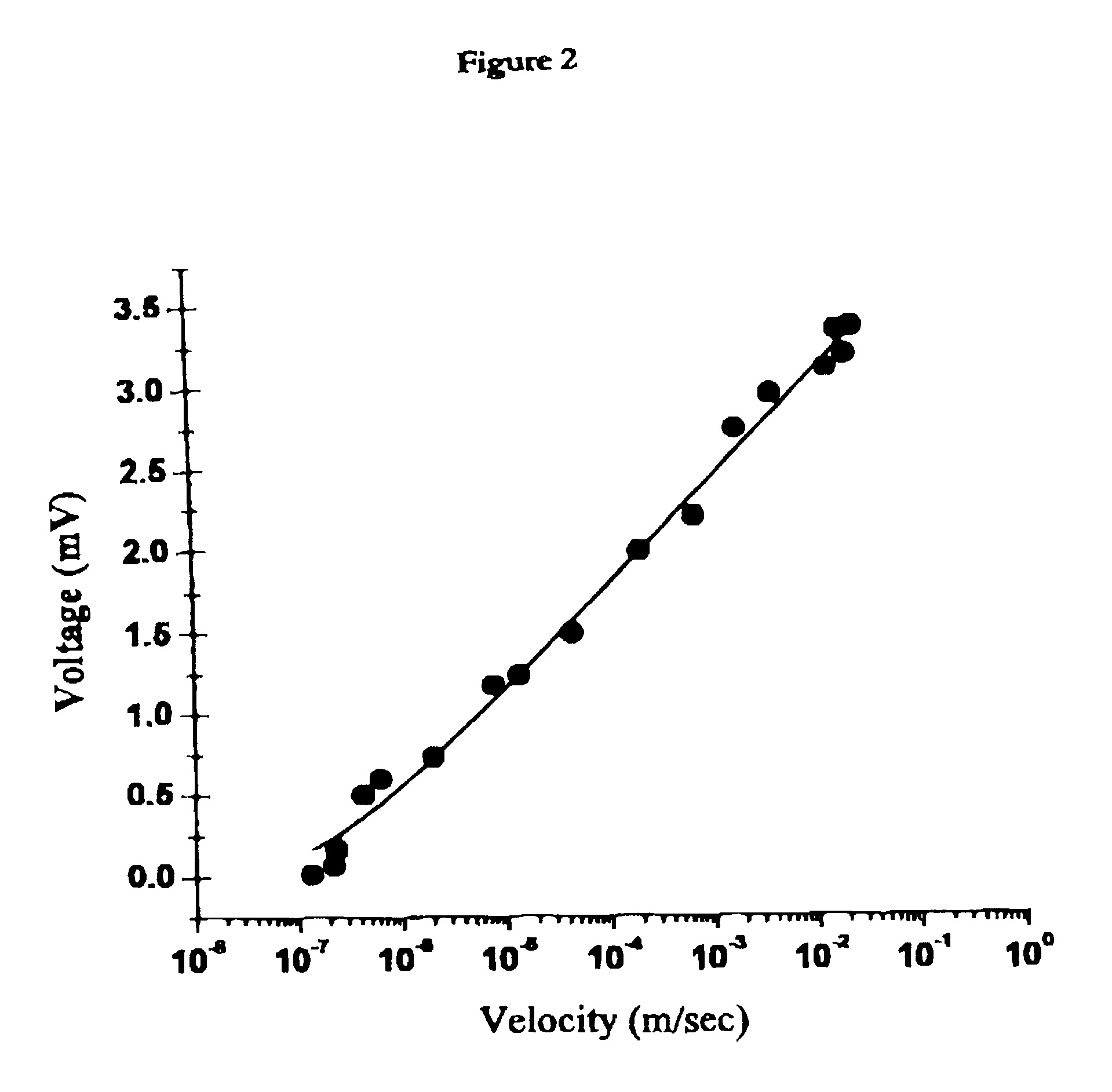Carbon nanotube flow sensor device and method
a flow sensor and carbon nanotube technology, applied in the direction of fluid speed measurement, measurement devices, instruments, etc., can solve the problems of method dependent, limited application of this method, and large equipment requirements (lasers, ccd cameras) to achieve the effect of accurate measurement and low response tim
- Summary
- Abstract
- Description
- Claims
- Application Information
AI Technical Summary
Benefits of technology
Problems solved by technology
Method used
Image
Examples
example 2
In order to determine the relation between the voltage generated and the liquid viscosity .eta., the experimental set up of Example 1 was repeated with different liquids. The liquids used were a water--glycerol mixture of water glycerol=88:12 (.eta.=113 mPas) and water:glycerol=75.multidot.25 (.eta.=234 mPas). These mixtures have viscosity of about two orders of magnitude higher than that of water (.eta.=0.9 mPas). Other liquids tested comprised of methanol, 0.6M HCl and 1.2MHCl. The values obtained are given in FIG. 3. It was also observed that the voltage developed in the case of polar liquids such as water were higher than for non-polar liquids such as methanol. Thus for .mu.=6.times.10.sup.-4 m / s, V.sub.water =2.1 mV, whereas V.sub.methanol =0.2 mV. The data obtained confirmed that the voltage response to flow velocity is sublinear (nearly logarithmic), is also dependant on the sonic and polar nature of the liquid and is relatively weakly dependant on the viscosity of the liquid...
example 3
Single wall carbon nanotube bundles were prepared by electric arc method followed by purification. The nanotube bundles prepared had an average tube diameter of 1.5 nm and were densely packed between two metal electrodes. The dimensions of the sensor sample were 1.times.10.sup.-3 m along the flow, 2.times.10.sup.-4 m thickness and 2.times.10.sup.-3 m width. The resistivity of the sensor material was about 0.02 .OMEGA.-m, and the sensor has a linear current voltage characteristic of up to 20 mV.
When the sensor bundle was immersed in blood it was observed that voltage developed only along the direction of the flow and not perpendicular thereto. The measurement protocol was as given in Example 1 above. The measurements were taken at different flow velocities for blood. The velocity and corresponding voltage values obtained are given in Table 1 below and also represented in FIG. 5. The values an FIG. 5 fits the empirical relation of V=.alpha.log(.alpha..beta.+1) where .alpha.=0.6 mV and...
PUM
 Login to View More
Login to View More Abstract
Description
Claims
Application Information
 Login to View More
Login to View More - R&D
- Intellectual Property
- Life Sciences
- Materials
- Tech Scout
- Unparalleled Data Quality
- Higher Quality Content
- 60% Fewer Hallucinations
Browse by: Latest US Patents, China's latest patents, Technical Efficacy Thesaurus, Application Domain, Technology Topic, Popular Technical Reports.
© 2025 PatSnap. All rights reserved.Legal|Privacy policy|Modern Slavery Act Transparency Statement|Sitemap|About US| Contact US: help@patsnap.com



